Curriculum, Philosophy and Approach
Why did we go REGGIO?
Nurturing Niche, Inc. is a child development program that has evolved its curriculum to better serve our community. Forming children who are representative of today’s world, distinct by identifying themselves in their atmosphere as unique humans, with special qualities that are recognized and appreciated. Children who are empowered to make a positive difference by reflection, molded by the environment that is a tool of encouragement to research, discuss, and approach. We are on a mission to live our motto:
“Unfolding Children’s Wings”
The Principle
Children are the constructors, developers, and initiators of experiences. Experiences in which they are free to express, grasp, and analyze the context in which social and cultural learnings are the foundation.
The Reggio Language
The expression of a child is varied; respected, appreciated, and encouraged.
The Reggio expression is a language that is conformed and sewed together by different threads, strong enough to form a meaningful rhythm. Rhythms that are conformed by different waves, naturally grasping knowledge in diverse dimensions. Conformed by language that is instructive to creativity and tailored dignify to thought process of our children.
Participation
At Nurturing Niche, Inc. we see the importance of incorporation. Parents, school, and children are the pillars. Chicago, culture, and community are also participants. We are humans that are impacted meaningfully by our surroundings.
To our approach, we have incorporated cultures, language, diversity, unification, appreciation, and acceptance.
Environment and spaces
Each and every one of our classrooms and the facility as a whole has been designed since day one to form spaces that are familiar and welcoming.
Our spaces are an extension of our children’s HOME. Making a vibe unique and tailored to what our children experience in their community and city.
Our intentional spaces are modified accordingly to the pedagogical approaches. At Nurturing Niche, Inc. spaces are meant to encourage dialogue, creativity, and a sense of wellbeing. Our main objective to is to embed in our children a sense of belonging.
Educational research
Research is the essence of how knowledge and its acquisition is approached. We transformed the ordinary processes of researching.
Into constructive, creative, child-led opportunities formed by the curiosity and inquiries of our children. Research is non patterned, non-complex, and reformulated.
Educational documentation
We document the process in formats that are a-typical but meaningful. In which there can be no-structure but deep reasoning to the children and the diverse frameworks used to grasp new knowledge.
We make processes visible, incorporated, and subject to the thought process of our children’s learning.
Evaluation
Evaluation many times in Reggio is ongoing but not a formal process. As our society and educational systems have tailored our thought process, that evaluation is done periodically and one way for all minds.
At Nurturing Niche, Inc. we believe that our evaluation process is also part of how we teach, unique. We will observe evaluation by the representation of our daily learnings throughout different scenarios and formats.
Values & Principles
The image of the child and their many languages
Children’s relationships and interactions within a system
The role of parents.
The role of space: environment
Teachers and children as partners in learning.
Not a pre-set curriculum but a process of inviting and sustaining learning.
The power of documentation.
Projects/Studies
Emergent Curriculum
The curriculum, often emergent in nature, is based on the interests of the children. When learning is the product of the child’s guided construction rather than simply the teacher’s transmission and the child’s absorption, learning becomes individualized. Most important, teaching becomes a two-way relationship in which the teacher’s understanding of the child is just as important as the child’s understanding of the teacher.
An emergent curriculum is not a free-for-all. It requires that teachers actively seek out and chase the interests of the children. This kind of teaching environment demands a high degree of trust in the teacher’s creative abilities and envisions an image of the child as someone actively seeking knowledge. It is a perspective that turns a structured curriculum, with predetermined outcomes, on its head. A standardized curriculum that is designed to replicate outcomes often eliminates all possibility of spontaneous inquiry, stealing potential moments of learning from students and teachers in a cookie-cutter approach to education in the classroom. Given the diversity of the children we teach, accepting a canned recipe for teaching, evaluation, and assessment is problematic at best.
Each child we teach is unique, requiring us to use our own judgment, instead of rules, to guide our teaching practice. To teach well, educators must ensure that creativity and innovation are always present. Although good teaching requires organization and routines, it is never inflexible and rarely routine. It dances with surprise. It pursues wonder. It finds joy at every turn.
Creating environments that reflect our Values & Foster Creativity
What kind of culture do we want the children to experience in our schools?
One thing we know for certain is that students will thrive in a school environment where the teachers themselves are thriving. The best schools nurture the teachers who work there as well as the students who learn within the walls.
Changing outcomes in classrooms require teachers to challenge what they know and what they think is developmentally appropriate and to reach beyond pedagogical techniques. In our experience, this can happen only in an environment that is respectful of differences in viewpoint, supportive of trying something new, and mindful of the willingness of teachers to shed their sensitivity and isolation.
Teaching for creativity involves asking open-ended questions where there may be multiple solutions; working in groups on collaborative projects, using imagination to explore possibilities; making connections between different ways of seeing; and exploring the ambiguities and tensions that may lie between them.
—Ken Robinson, Out Of Our Minds: Learning to Be Creative
More Historical Notes and General Information
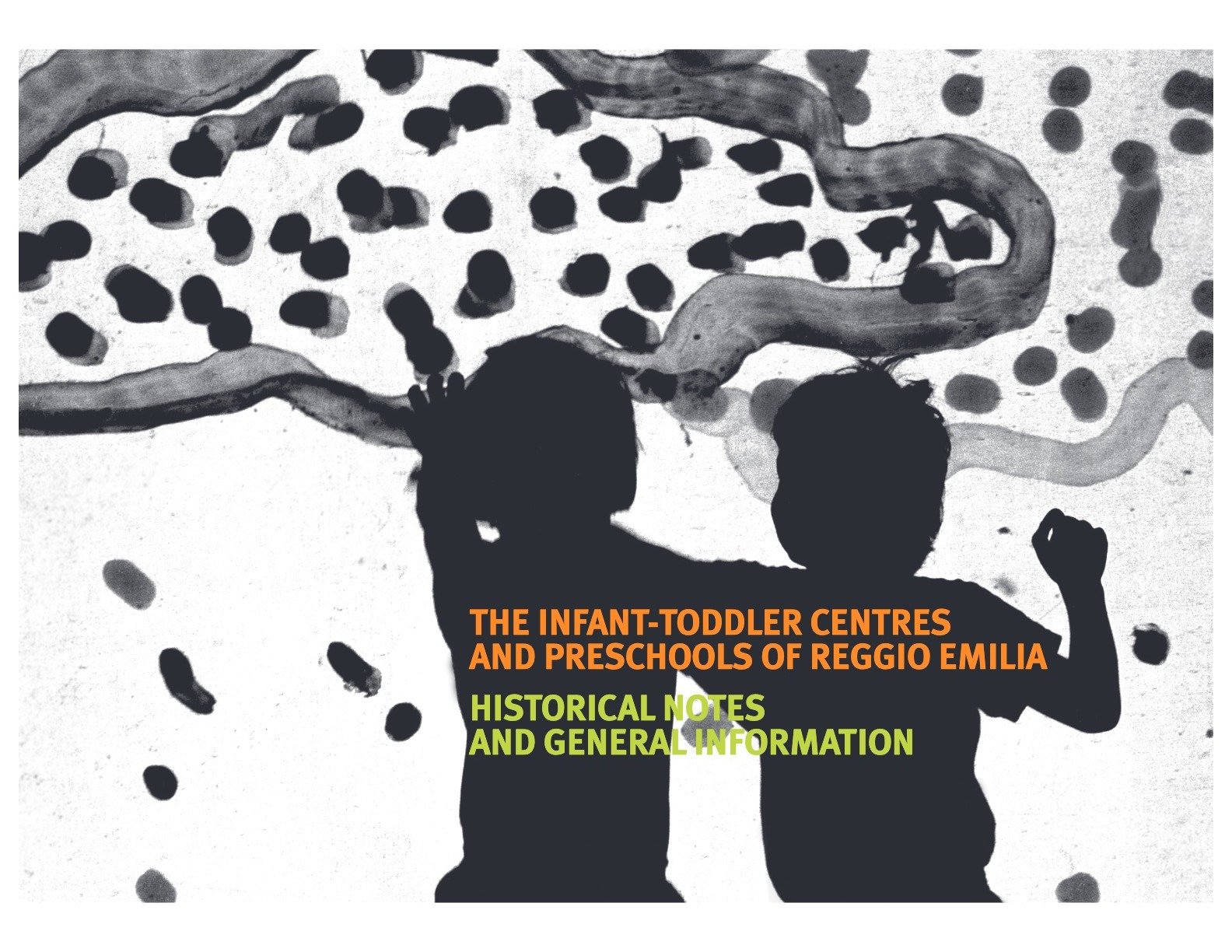
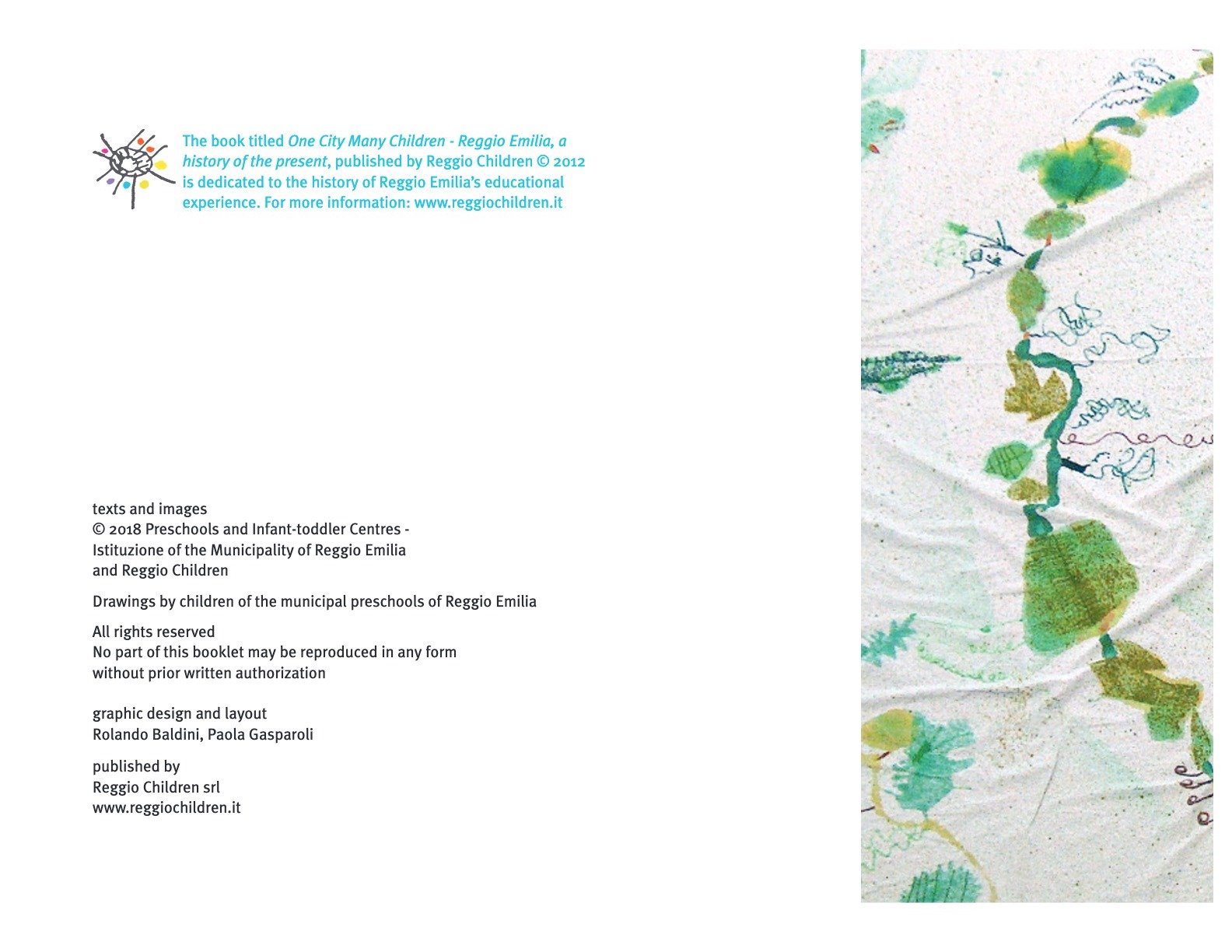




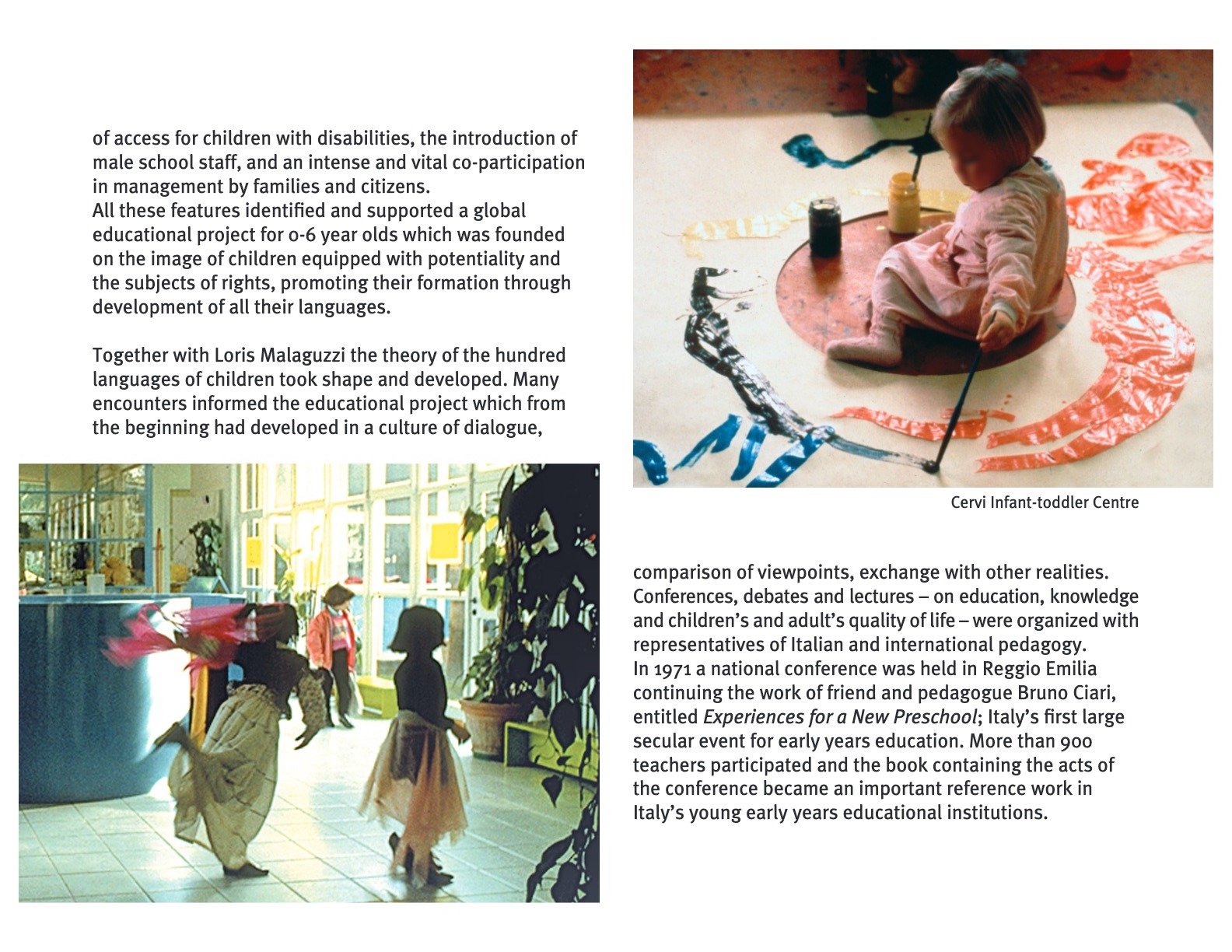

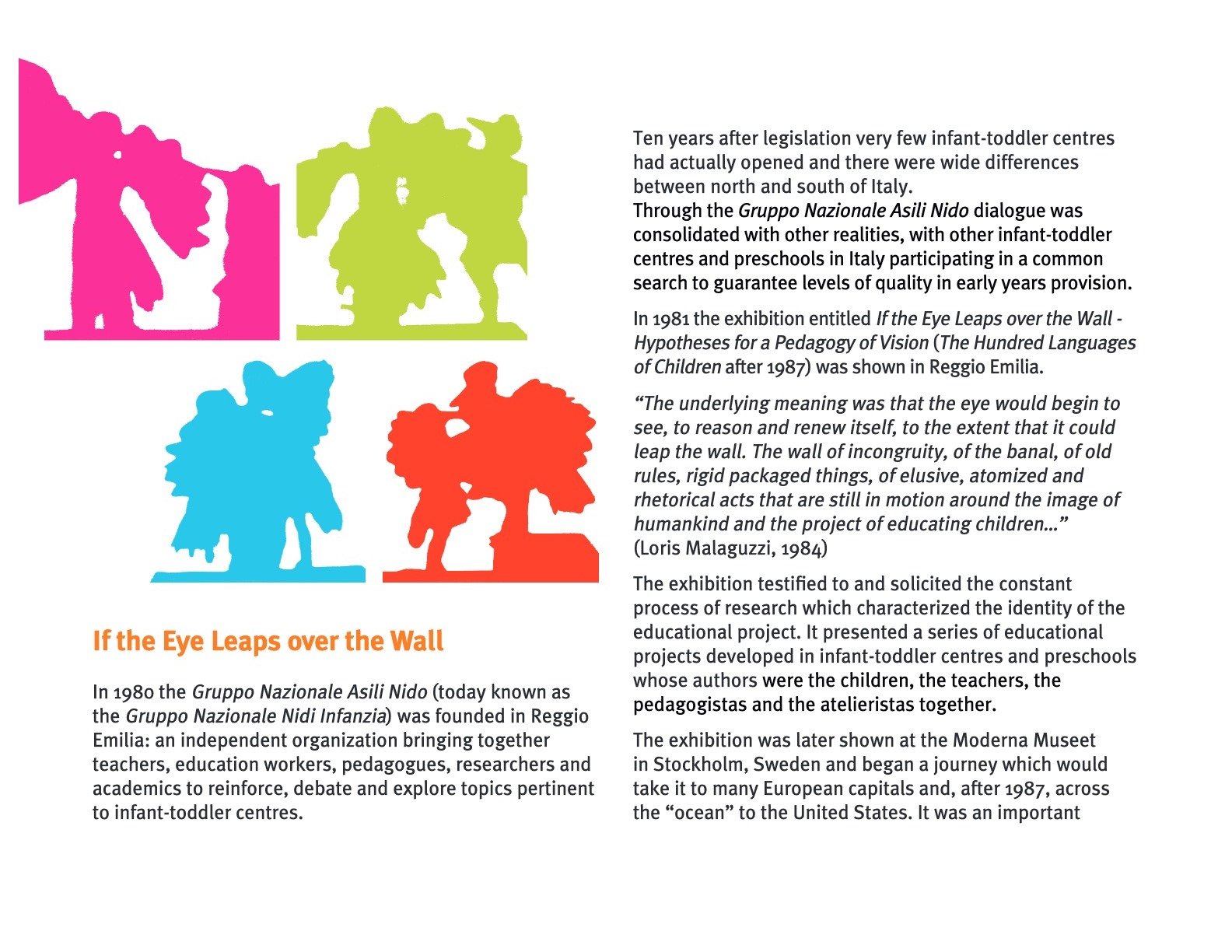

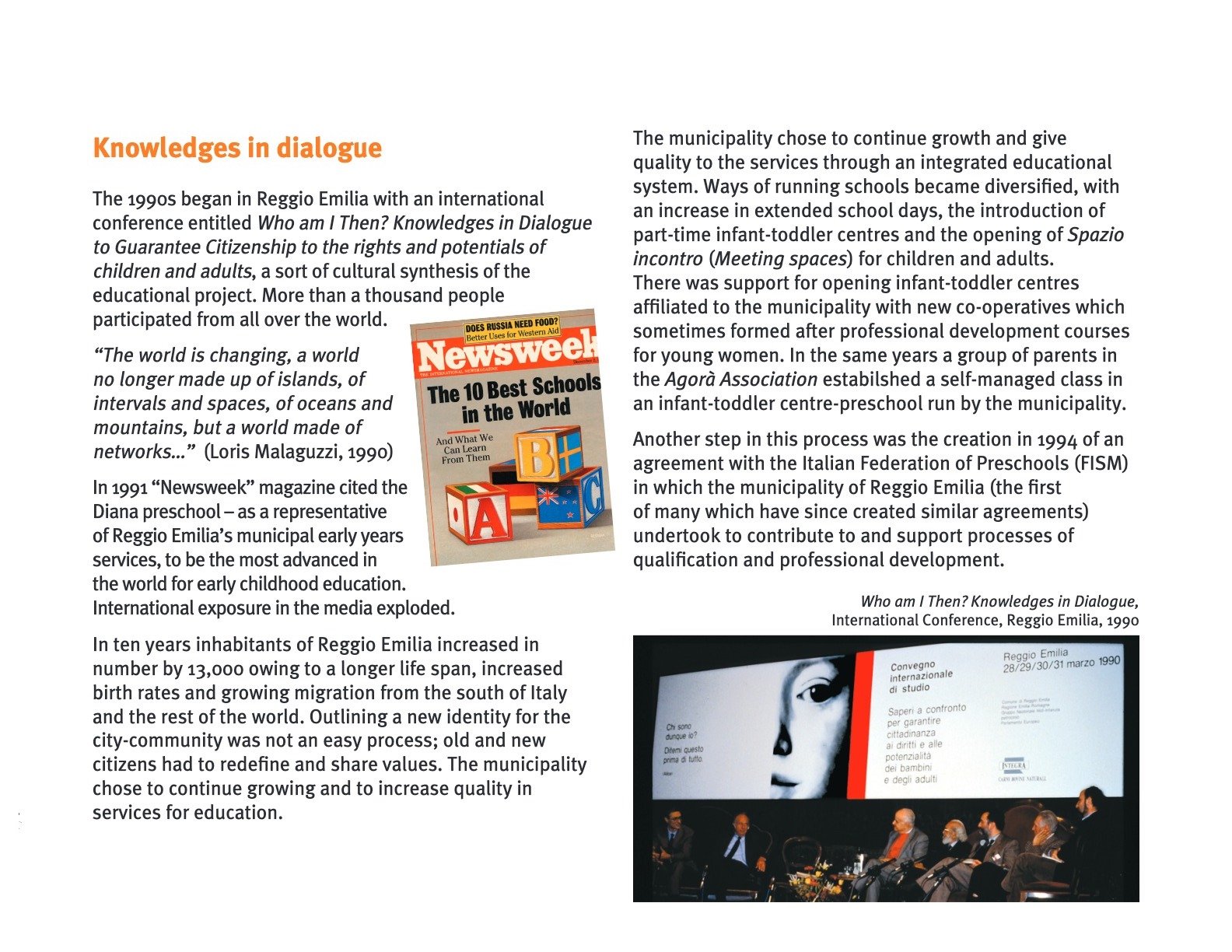













References:
Gandini, L., Etheredge, S & Hill, L. (2008). Insights and Inspirations from Reggio Emilia: Stories of Teachers and Children from North America. Worcester, MA: Davis Publications.
Edwards, G., Gandini, L. & Forman, G. (1998). The hundred languages of children: The Reggio Emilia Approach - Advanced Reflections. Westport, CT: Ablex Publishing Corp.
Scheinfeld, D., Haigh, K., & Scheinfeld, S. (2008). We are all explorers: Learning and teaching with Reggio principles in urban settings. New York: Teachers College Press
PDF on Open-Ended Materials
Articles







